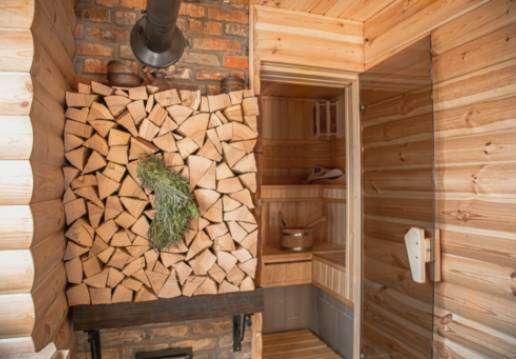Maintaining Air Quality in Wood-Burning Saunas
22 October 2025 by Jasper D.Wood-burning saunas are a popular choice for many homeowners due to their traditional ambiance and therapeutic benefits. However, maintaining air quality in these saunas is crucial to ensure a safe and enjoyable experience. By understanding the impact of wood selection, controlling humidity levels, cleaning and maintaining sauna stoves, and managing airflow effectively, you can create a healthier environment for your sauna sessions.

Best Practices for Controlling Humidity Levels in Wood-Burning Saunas
Controlling humidity levels in wood-burning saunas is essential for maintaining a comfortable and healthy environment. Excess moisture in the air can lead to mold growth, unpleasant odors, and even respiratory issues. To ensure optimal air quality in your sauna, here are some best practices for managing humidity levels:Ventilation: Proper ventilation is key to controlling humidity in a wood-burning sauna. Make sure your sauna is equipped with sufficient vents to allow for the escape of humid air. Opening windows or using a vent fan can also help to circulate fresh air and reduce moisture levels.
Use a hygrometer: A hygrometer is a device that measures the humidity levels in the air. By monitoring the humidity in your sauna regularly, you can adjust ventilation and heating settings accordingly to maintain a comfortable and safe environment.
Control water usage: Avoid pouring excessive amounts of water onto the sauna stove during use, as this can create steam and raise humidity levels. Use water sparingly to achieve the desired level of heat and humidity in the sauna.
Promptly repair leaks: Any leaks in the sauna's walls, roof, or plumbing can introduce excess moisture into the air. Inspect your sauna regularly for any signs of water damage and repair leaks promptly to prevent humidity issues.
Dry off before entering: Encourage sauna users to dry off completely before entering the sauna to prevent excess moisture from being introduced into the air. Providing towels or a designated drying area outside the sauna can help to minimize humidity levels inside. By following these best practices for controlling humidity levels in wood-burning saunas, you can ensure a comfortable and healthy environment for relaxing and unwinding. Proper ventilation, monitoring humidity levels, and practicing good maintenance habits are key to maintaining optimal air quality in your sauna.
Understanding the Impact of Wood Selection on Air Quality in Saunas
Different types of wood produce varying amounts of smoke and emissions when burned, which can affect the health and comfort of those using the sauna. Softwoods such as pine and cedar are commonly used in saunas due to their pleasant aroma and ability to withstand high temperatures. However, softwoods tend to produce more smoke and creosote when burned compared to hardwoods. This can result in poor air quality and a buildup of harmful pollutants in the sauna. Hardwoods such as oak, birch, and maple are considered to be better options for wood-burning saunas as they burn more cleanly and produce less smoke. Using hardwoods can help maintain better air quality in the sauna and reduce the risk of respiratory issues for sauna users. It is important for sauna owners to carefully consider the type of wood they use in their sauna stove to ensure optimal air quality. Regularly cleaning and maintaining the stove, as well as ensuring proper ventilation and airflow, can also help mitigate any negative effects of wood smoke on air quality within the sauna.Tips for Regularly Cleaning and Maintaining Wood-Burning Sauna Stoves
Regular cleaning and maintenance of wood-burning sauna stoves is essential for ensuring the longevity of the equipment and the quality of the air inside the sauna. Here are some tips to help you keep your wood-burning sauna stove in optimal condition:Regularly remove ash and debris: It is important to regularly remove ash and debris from the stove to prevent buildup and ensure proper airflow. Use a brush and dustpan to sweep out the ashes and debris after each use.
Clean the stove body: Wipe down the exterior of the stove with a damp cloth to remove any dirt or grime. Make sure to clean the stove body when it is cool to avoid burns.
Check for rust or corrosion: Inspect the stove for any signs of rust or corrosion. If you notice any rust spots, use a wire brush to remove them, and then apply a heat-resistant paint to protect the metal.
Clean the chimney and flue: It is important to clean the chimney and flue regularly to prevent the buildup of soot and creosote, which can pose a fire hazard. Use a chimney brush to remove any soot deposits and check for blockages.
Check the door gasket: Ensure that the door gasket is in good condition and provides a tight seal. If the gasket is worn or damaged, replace it to prevent heat loss and smoke leakage.
Maintain proper ventilation: Ensure that your sauna has proper ventilation to allow for adequate airflow. This will help prevent the buildup of carbon monoxide and other harmful gases. By following these tips for cleaning and maintaining your wood-burning sauna stove, you can ensure that your sauna remains safe and enjoyable for years to come.